Anglers Booking Team
The expert copywriters at Anglers Booking have meticulously crafted this article. Our dedicated team of writers provides valuable insights and information to enhance your angling experience.
 11 minutes read
11 minutes readFishing lures are among the most popular tools in an angler's tackle box. While live bait remains a go-to for many, artificial lures offer unique advantages. They're highly versatile, reusable, and designed to mimic natural prey across various fishing conditions.

But how do you know which lure to choose? The answer depends on several factors. The type of fish you are fishing for will also determine the lure you select. Water conditions are also an important factor. In this guide, we will explore the most popular types of fishing lures. You will also get the most crucial information about them.
Choosing the right bait makes the difference between success and failure in fishing. Baits play a key role in attracting fish. Each type of bait targets specific types of fish. Understanding how they work in different water conditions is key to fishing success.

Lures are not just tools but an exciting part of the angler's experience. Their versatility, durability, and the thrill of using them make them popular among anglers.
Lures come in many shapes and sizes. Also, they are different in color. This variety means you can always find the right one to suit your fishing conditions.
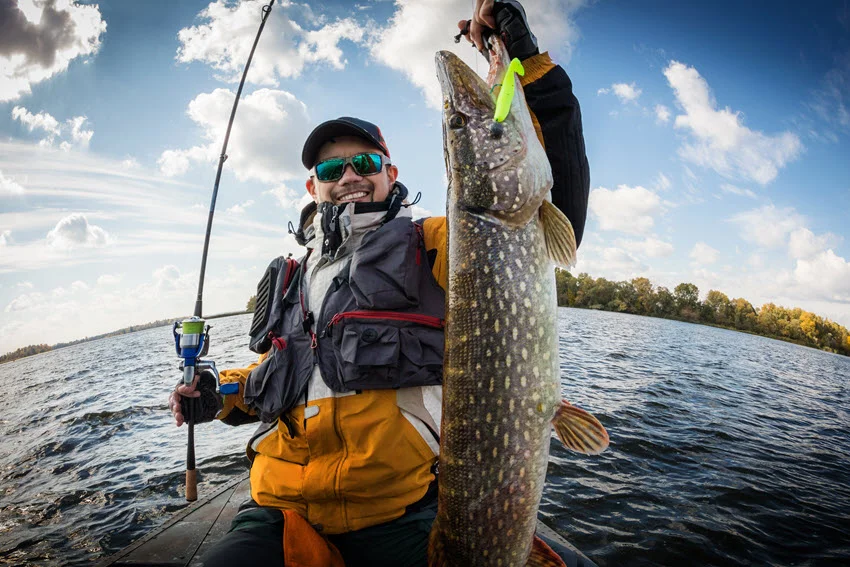
Your knowledge about different fish species and their preferences is your power in fishing. Understanding the fish you intend to catch will help you choose the right lure, giving you the confidence to succeed.
Following these guidelines will help maximize your chances of success. Remember, fishing is a game of patience and persistence. If you don't get bites immediately, stay determined and keep trying.
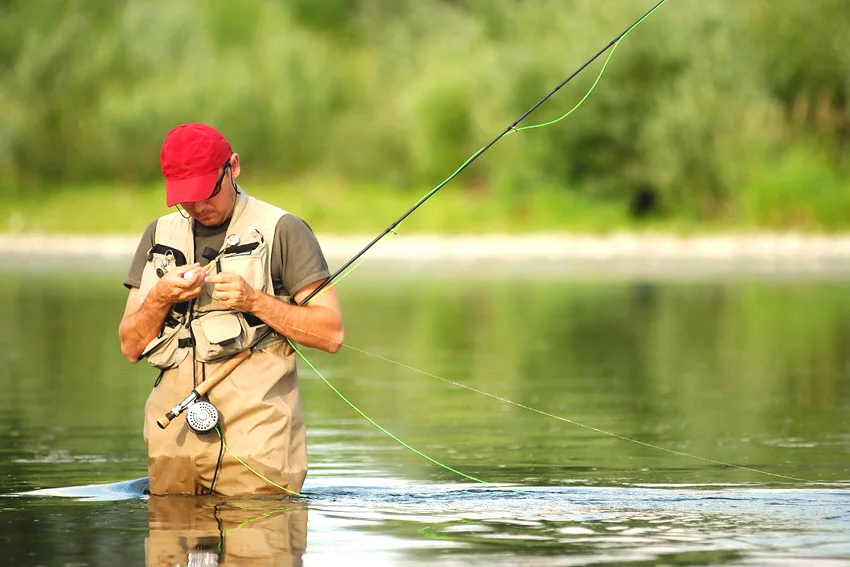
Where you fish greatly impacts the type of lure you should use. Different environments require different kinds of lures to match the conditions:
Choosing a lure that suits the fishing environment will ensure you're targeting the most active fish, increasing your chances of a successful catch.

The color and size of a lure are important for attracting fish. Water clarity and the size of your target fish will influence your choice.
Selecting the correct color and size will make your lure more appealing, significantly increasing your chances of a successful catch.

Fish use their senses to detect prey. They can detect movement, vibration, and sound. The right lure creates a realistic motion that triggers strikes.
Selecting a lure with the proper motion, sound, or flash can be the difference between getting noticed and getting ignored. Match the action to your target species and water conditions to increase your chances of success.
We have explained to you how to choose and adjust lures. After you have that information, it's time to introduce you to the top lures. Don't miss the following parts!
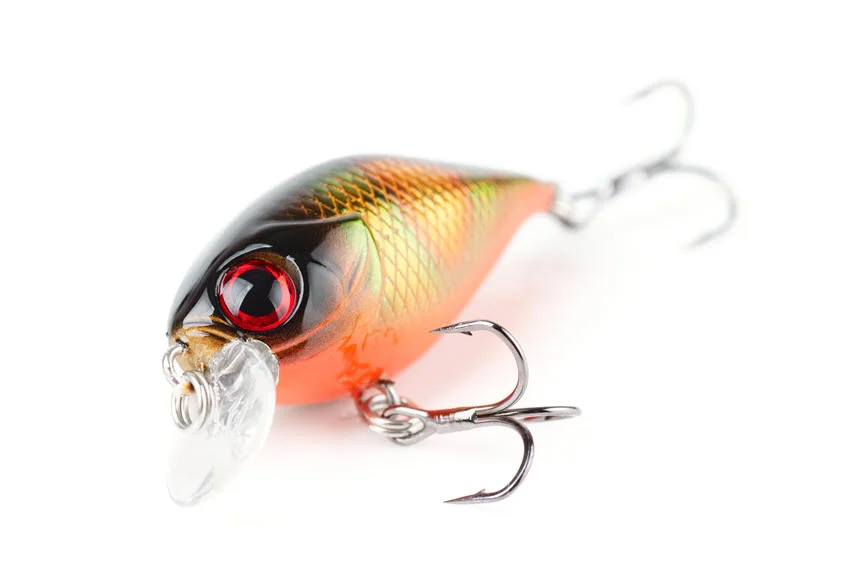
Crankbaits are very popular fishing lures. Anglers use crankbaits in various conditions, and are an excellent choice for attracting predatory fish. This type of lure has a great feature: It can be used at different depths, allowing anglers to target fish at greater depths.
Crankbaits remain a favorite among anglers due to their adaptability in saltwater and freshwater environments. Their ability to replicate the natural movement of baitfish makes them an indispensable tool for any angler.
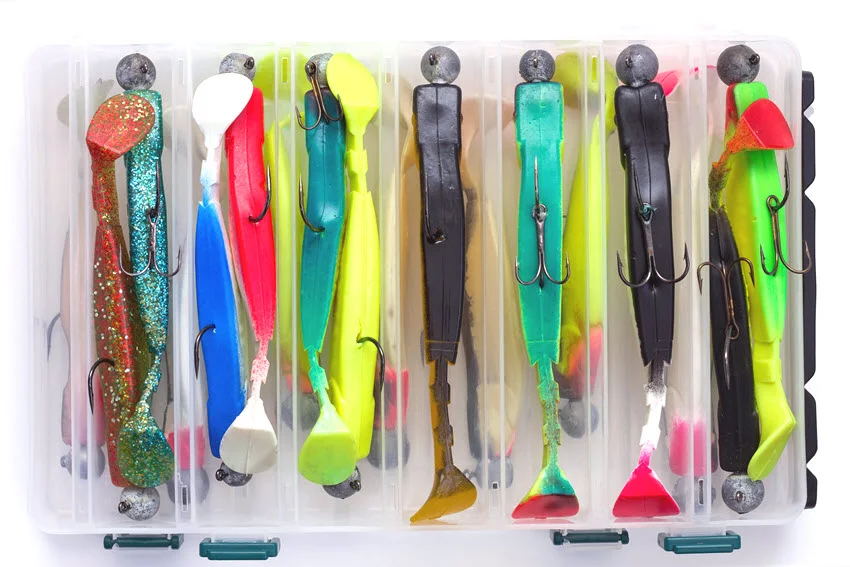
Soft plastics are a staple in the angler's arsenal because of their lifelike action and versatility. These lures mimic a variety of prey, such as worms, crawfish, and minnows. Soft plastics are particularly effective in targeting fish reluctant to strike harder lures.
Soft plastics are incredibly versatile, allowing anglers to target a wide range of species. Their lifelike action makes them a valuable tool for catching fish in any environment.

Spinner baits are unique lures. It combines the flash and vibration of spinning blades with the profile of a baitfish or other prey. These lures are often used in areas with heavy cover. Spinner baits are especially effective in murky waters or low-light conditions. That is because of the flash created by their blades.
Spinner baits are great for saltwater and freshwater fishing. Spinnerbaits will be effective whether you're fishing around cover in murky waters or targeting aggressive Bass.

Jerkbaits are often used in colder water conditions, where fish are more likely to strike slower-moving prey. They can be fished with a stop-and-go retrieval technique, which creates a twitching, darting motion that mimics a struggling fish. This motion is irresistible to predatory fish.
These lures are ideal for anglers looking to target predatory fish. Their erratic action makes them effective at attracting even the most cautious fish. They are a good choice for all anglers.
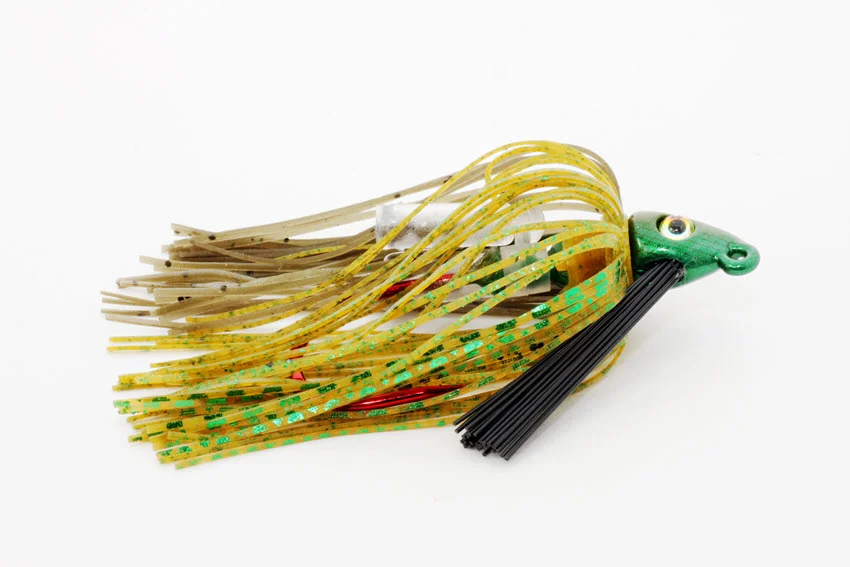
Jigs are one of the most versatile and effective lures. They consist of a weighted head and a hook. Often paired with a soft plastic or natural bait. The unique movement of a jig, combined with its ability to reach different depths, makes it a great choice for many anglers.
Thanks to their design, jigs offer exceptional versatility. They allow anglers to fish in different depths and conditions, and their effectiveness in imitating prey makes them a staple in any tackle box.
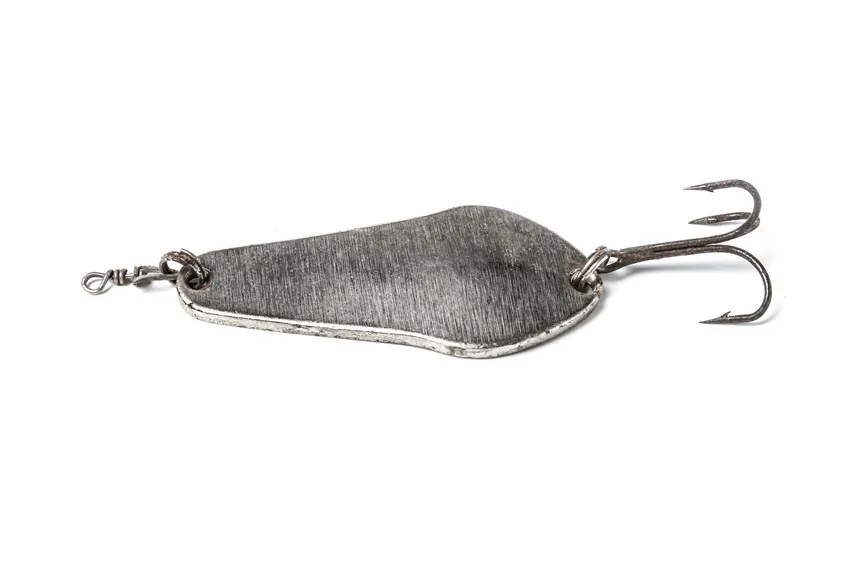
Spoons are metal lures. Their curved shape creates an erratic, wobbling motion that attracts predatory fish. Spoons are effective for casting and trolling. They are reliable options for various fishing conditions.
Spoons are a simple yet excellent lure choice. Their ability to mimic wounded prey makes them a favorite among anglers targeting fast-moving predatory fish.
Fishing lures offer anglers flexibility and precision. Understanding how each type works and when to use it will boost your chances of landing a trophy catch. Whether casting from a pier or heading offshore, the right lure makes all the difference.
What's your go-to lure or the one that landed your personal best? Share your experience in the comments! Let's build a community where every angler can learn from each other and land more fish.

The expert copywriters at Anglers Booking have meticulously crafted this article. Our dedicated team of writers provides valuable insights and information to enhance your angling experience.
Embark on unforgettable fishing adventures with us at Anglers Booking.
book your charterOctober 17, 2025
October 15, 2025
October 10, 2025
October 11, 2025
October 4, 2025
September 29, 2025
September 25, 2025
September 21, 2025

You're now part of our exclusive community. Get ready for premium content and updates straight to your inbox.
close
Subscribe to our newsletter and receive a selection of cool articles every week.
Please enter a valid email address.

Be the first to know when we're back in action.
Please enter a valid email address.
Leave a Comment
Your email address will not be published. Required fields are marked *
Thank you for your comment! It has been submitted for review and will appear on the site shortly.